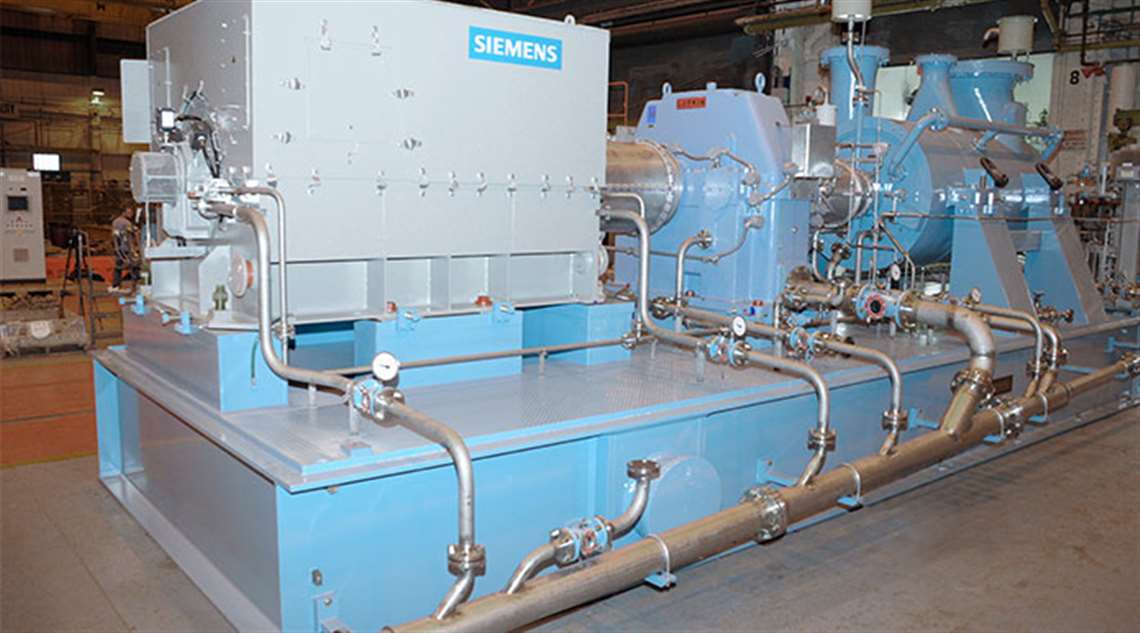Siemens’ E-Drive Compressors For Permian
May 30, 2019

Siemens announced it has recently been awarded a contract to provide three residue compression trains for two, 250 million (500 million total) mmscfd cryogenic gas plants in the Delaware Basin of the Permian region in Texas. Siemens said the customer is a key producer in the region and long-term user of reciprocating compression equipment that recognized the benefits of centrifugal compression and looked to Siemens for a fully integrated, turnkey solution that includes compressors, motors, variable frequency drives and associated process equipment.
Each train consists of a 22,000 hp motor, gearbox and multi-stage Dresser-Rand Datum centrifugal compressor, all mounted onto a single skid. The compressors, motors, and drives will all be built by Siemens in the USA and is scheduled for commissioning the latter part of 2020.
“This project is an excellent example of Siemens’ ability to offer its customers a complete integrated solution,” said Patrice Laporte, vice president of Oil and Gas for Siemens America. “This customer is one of the largest shale gas players in the Permian Basin and this is their first order with us. For them to switch from their traditional approach to our proposed solution lends testament to their confidence in our understanding their needs and having the technical expertise to offer a customized, innovative offering.”
Mid-size gas treatment plants traditionally use reciprocating compressors driven by electric motors or gas engines. However, with the increase in production from shale plays, larger gas plants – in the range of 200 to 300 mmscfd – are being constructed, which Siemens said is leading gas processing companies to consider alternative compression solutions in order to reduce costs, footprint, and maintenance.
While the traditional approach would require 10 large reciprocating units for this project, Siemens’ centrifugal compressor solution met the entire plant duty for this two x 250 mmscfd project using just three compression units while ensuring low turndown capability. The plot space and the ancillary infrastructure – such as foundations, piping, wiring, cabling and electrical systems – was also reduced, resulting in significant capital cost savings for the customer.
MAGAZINE
NEWSLETTER
CONNECT WITH THE TEAM





